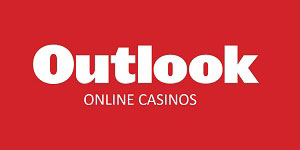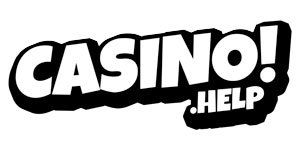Josh Reed
Aussie horror Primal recieved it’s World Premiere this past Thursday at the opening night of the 2010 London Film4 FrightFest, and we were lucky enough to get a exclusive interview with the films director, Josh Reed.
Is there a real aboriginal legend which inspired Primal?
No, we made it all up. We wanted total creative freedom, without being hamstrung by cultural sensitivities or the need for accuracy. Besides, I don’t think tentacle porn features heavily in Aboriginal mythology.
The killer bunny scene got huge laughs at FrightFest, and there was some question over the general humour in the film, was that intentional?
Well, if you don’t want people to laugh you probably should shy away from killer bunnies, but this is an interesting question. The humour’s intentional, because in this sort of visceral, adrenal horror, humour is a valuable counterpoint to keep your audience on edge. But there’s a very delicate balance you need to strike to stop it tipping over into farce or parody. Striking the right tone is one of the hardest things to pull off, and there are areas where I’m really happy with it but also spots where I feel I didn’t get the balance quite right.
I remember on the first day of rehearsal I think it was Wil or Krew asked about the humour, and how I wanted them to play it, and I told them to take the whole thing seriously. My feeling, and I stand by this, is that if they’d played for laughs the balance would be shot entirely. In a film like this the humour is more effective, and a better counterpoint to the horror, if it is innate rather than overt, and even slightly ambiguous.
You have a very strong female lead and somewhat weaker male cast almost as if sexual stereotypes are reversed. Was that a conscious decision?
Reversing stereotypes is always worth doing, because it refreshes your subject matter. And in light of the tentacle porn component I’d probably stand a better chance of ever getting laid again if I said yes, it’s a feminist statement, but in honesty the base reasons are probably more pragmatic. I reckon horror movies are usually best served by a female lead. At a basic level it affects the men in your audience, who feel an innate urge to protect her and can’t, and the women in the audience will identify more strongly with her. Having said that, I do love strong women, and there’s nothing quite as satisfying as a blood-soaked heroine who’s just not going to take it anymore.
As for the ineffectual men, again that’s not a statement about men in general. Men are alright by me, I even happen to be one myself. But I wanted Anja, as the film progressed, to be increasingly isolated, having to rely on her own resources. If you have two characters who are both strong pooling resources at the end, it waters down the threat, but if you have a heroine struggling to find the strength inside herself, and then being saddled with a man who’s a liability, it enhances the threat. At the end of the day, you make these decisions to enhance the experience of a film like this, and if interesting thematic material comes out of it for people, then that’s icing on the blood pudding.
Where did you find your cast?
Because we were operating on such a low budget, our initial plan was to hold open casting calls, but in the end we decided it was so critical that the performances be really strong, that we got Kirsty McGregor on to cast it. Looking back, this was money very well spent. Kirsty’s expertise and advice were indispensable, but equally her reputation meant we got access to the best up-and-comers around. And the ensemble we put together threw themselves into it lock stock and barrel.
Was this shot on a low budget? Is there anything you’d change if you had more time or/and more money?
Yeah the cash was really tight, and I can’t count the ways we would have done things differently with more money. The schedule was very tight, given the visceral nature of what we were trying to achieve, in the wilderness and largely at night. It’s hard when you come to shoot a key scene, that you’ve spent weeks detailing at script level, and you’ve only got an hour and a quarter to get it in the can. It’s constant compromise. Previously I’d always worked with a small crew or a bunch of friends and we’d move fast, but with a full crew, and to get the production values we were after, things move slower, so coverage suffers. At the end of day two I had to throw out my storyboards, which were unattainable, and then get up at the crack of dawn every morning to replan the day ahead. That became my cycle for the whole shoot, get up at dawn, storyboard until it was time to head to set, drive out to the country, shoot ’til after midnight, drive home again, sleep for a few hours and do it again. if filmmaking is the ninth circle of hell, low-budget filmmaking is the tenth, eleventh and twelfth distilled.
But horror is like cinema’s version of punk, it’s much more about attitude and energy and ideas, delivering an experience. I’m forgiving of budgetary compromise in a horror movie if those other areas are covered, in a way that I wouldn’t be with most other genres, and I think that’s a common generosity with horror fans.
But, you know, with the cash we had we could have built a nice little house, with plumbing and everything, so we can’t really whine.
Any plans for a sequel?
No, none at the moment. We’re forging on with a bunch of other projects at present.
Were they any films you took inspiration from? The lead female character seemed very reminiscent of lead character in The Descent.
There’s heaps of stuff in primal that’s inspired by other films, if by “inspired by” you mean “pilfered from”. Obviously Japanese tentacle porn made an impression, and although this is in no way a zombie movie, my love of that genre shines through. But mostly we took inspiration from our frustration with the Australian film industry, and its slavish subservience to bureaucrats. We wanted to offend and alienate the wankerati that run the show here, make a film that didn’t embrace their aesthetic, taste or values at any level.
Just how hard is it to make a horror film in Australia? Is it easier following the success of Wolf Creek, Rogue etc.?
There are a lot being made at the moment, but I think that has more to do with a critical mass of disenfranchised filmmakers growing increasingly frustrated with the turgid dross the government bodies cream their pants over, than it does with the success of Wolf Creek per se. Although Greg, and also the Spierigs, have to be acknowledged for forging the way, being the first to raise that middle finger. Now genre is suddenly the buzz word at the funding bodies here, even if there’s a sense that they’re not entirely sure what it is or how to recognise it. We’re cautiously hopeful, while fully expecting to be disappointed. We’ll see.
Are there any filmmakers you’re influenced by?
So many, from Raimi to Leone, Peckinpah, Hawkes, Corman, Wilder, to Scorsese, Romero, Kurosawa, Rodriguez, Dante, Chuck Jones… maybe ask me who I’m not influenced by. Working today I’d say Takashi Miike is the man, not only for the breadth and volume of his output, and the gleeful energy, but because more than anyone else, except maybe Rodriguez, he’s redefining how films are made in a way that is actually possibly sustainable.
What other projects are you working on?
The script we’re focussing on at the moment is a psycho/satire/thriller called Hidebound. It’s not horror, but it does have a healthy amount of sex, violence, blood and dismemberment, as all good films should. We’re also putting together a slate of low budget, hard-core horror movies that we’d like to get scrolling over, so we can stop working on other people’s projects and just happily roll around in our own stuff.











































